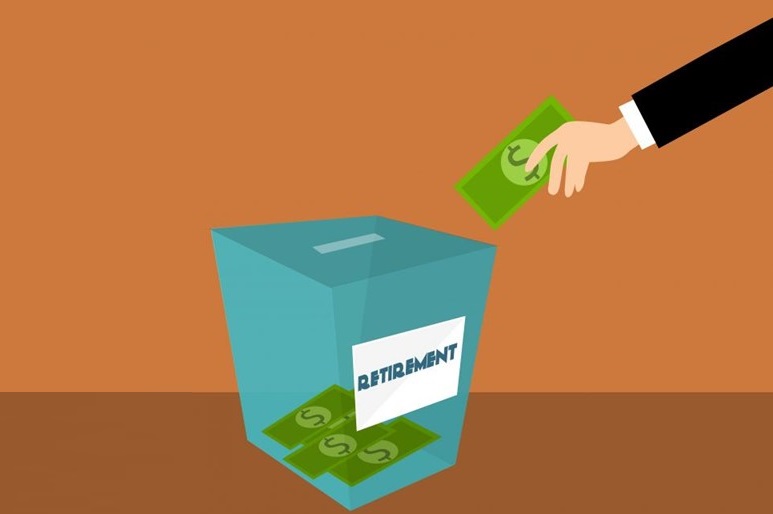Retirement and Registered Retirement Savings Plan (RRSP)

0%
An RRSP is a great way to start saving for retirement.
A Registered Retirement Savings Plan (RRSP) is a savings plan, registered with the Canadian federal government that you can contribute to for retirement purposes. When you contribute money to a RRSP, your funds are “tax-advantaged”, meaning that they’re exempt from being taxed in the year you make the contribution.
An RRSP is a great way to start saving for retirement. It’s a type of account you can use to defer your taxes until you retire. The idea is to contribute to your RRSP in your higher income earning years and withdraw from it in retirement, when income is typically lower. Your contributions, invested sensibly, will grow in a tax-deferred manner until retirement, when withdrawals are fully taxable. But if you don’t know a lot about RRSPs, it’s time to educate yourself.
Start saving early
Saving money when you’re younger means you likely won’t need to save as much to reach your financial goals. If you start saving $100 a month when you’re 25, you’ll end up with almost $197,000 in 40 years (assuming a 6% annual rate of return), according to Sun Life Financial. But if you start saving later, you’ll need to save even more to have $197,000 by the time you turn 65. Below are estimated monthly contributions to have $197,000 at retirement depending on the age you start saving in an RRSP.
Starting age |
35 |
45 |
55 |
Monthly contributions required |
$195 |
$420 |
$1,175 |
Know how much you can contribute
In order to contribute to an RRSP, you need to have earned income (such as income from employment, a pension, or a rental property). Your limit is 18% of your earned income for the preceding year up to an annual maximum ($25,370 in 2016). You can find your limit on your latest notice of assessment or notice of reassessment, by logging into your Canada Revenue Agency (CRA) account online, or by calling the CRA at 1.800.267.6999.
RRSP contribution = tax refund
Contributing to an RRSP will likely result in a tax refund. You could re-contribute that money into an RRSP or pay down debt. If you want to get a tax refund this year, you need to make an RRSP contribution by a deadline set by the government each year.
Determine whether or not you should contribute
Sometimes there are cases when you shouldn’t contribute to an RRSP. For instance, if you’re carrying high-interest credit card debt, you should pay off your debt instead of making an RRSP contribution. Also, if you have a defined benefit pension or a very low income, you’re probably better off contributing to a TFSA instead so you won’t be subjected to Old Age Security claw backs in retirement.
RRSP room carries forward
If you have $9,000 in RRSP contribution room but you only contribute $5,000, the remaining $4,000 in contribution room carries forward. Therefor, if you expect to have $6,000 in RRSP contribution room next year, you’ll be able to contribute up to $10,000 ($4,000 + $6,000). Your unused contribution room carries forward until you turn age 71.
Buy low-cost investments
If you want someone to manage your money for you, you’ll be charged a fee. The fees you pay for owning a mutual fund can often be high but there are low-cost alternatives.
Invest globally
Prior to 2005, you weren’t allowed to allocate more than 30% of your RRSP towards foreign investments. But now you can invest as much as you want in global stocks and bonds.
Make contributions regularly
The best way to save is to make regular contributions. If you automatically put away money every week or month, there’s less of a chance you’ll spend it. Contributing to an RRSP regularly means you likely won’t need to get an RRSP loan.
Consider an RRSP loan
In an ideal world, you’ll make regular contributions to your RRSP. But if you can’t, you may want to consider getting an RRSP loan. Before getting a loan, you should look at the interest rate on the loan, determine whether or not you can afford to make the loan payments, and figure out if you should get a loan. If you’re in a low tax bracket, getting a loan might not be worthwhile. Most financial institutions will offer you a loan that needs to be paid back within a year or a catch-up loan that needs to be paid back within five to 10 years. If you do decide to get a loan, you should use your tax refund to pay off your loan quicker.
You can’t contribute to an RRSP forever
When you turn 71, you can no longer make contributions to an RRSP. You must convert your RRSP into a registered retirement income fund (RRIF) and begin making withdrawals. There’s also the option to withdraw everything from your RRSP but you’ll have to pay a withholding tax of up to 30%. When you’re close to retirement, it’s best to speak with a financial advisor to find out what the best option is for your situation.
RRSPs aren’t just for retirement
The federal government allows you to make tax-free withdrawals to buy a home (by using the Home Buyers’ Plan) or to improve your education (by using the Lifelong Learning Plan). This money needs to be re-contributed to your account over a certain period of time or those withdrawals will be considered taxable income. Keep in mind that withdrawing money from your RRSP means your money won’t have as much time to compound and you may need to save even more for retirement. However, you shouldn’t save money for a vacation or a car in an RRSP. Instead, you should use a TFSA.
Contributing to an RRSP is simply one of the best ways for Canadians to save for retirement and reduce their tax burden. The RRSP advantage is further heightened when you consider employer-matching programs, access to the Home Buyers’ Plan, and potentially increasing your Canada Child Benefit payments.
Common mistakes to avoid with an RRSP
Unlike other investment options, getting the most out of an RRSP is fairly straightforward. That being said, there are some simple and surprisingly common mistakes you’ll want to avoid, as they can derail your progress and hinder your savings goals.
- Making early withdrawals
If you withdraw funds from your RRSP prior to retirement, you’ll have to pay an immediate withholding tax on the amount you withdraw. This tax can be significant: 10% on the first $5,000 withdrawn, 20% for amounts between $5,000 and %15,000, and 30% on amounts greater than $15,000. The amount you withdraw is also considered taxable income, so you’ll be hit again when you file your annual taxes. - Not making regular contributions
It’s always easy to find reasons why you can’t contribute to your RRSP in a given month or pay period. That’s why it’s always best to “set it and forget” with automatic payments or contributions. This can often be set up through your bank, financial institution, or employer if it’s a group plan through work. Consistently contributing a small amount every paycheck will often put you in a better position than trying to make large (but irregular) contributions. - Starting too late
The best time to start contributing to an RRSP is yesterday. Time is on your side when it comes to accruing the compound gains that an RRSP yields. If you start contributing to an RRSP when you’re 35, for instance, you still have 30 years of saving and gaining compound interest to take advantage of before you retire. If you start even younger, you’re in an even better position.
Tags: Retirement, savings, government, benefit
RELATED ARTICLES
| M | T | W | T | F | S | S |
|---|---|---|---|---|---|---|
| 1 | 2 | 3 | 4 | |||
| 5 | 6 | 7 | 8 | 9 | 10 | 11 |
| 12 | 13 | 14 | 15 | 16 | 17 | 18 |
| 19 | 20 | 21 | 22 | 23 | 24 | 25 |
| 26 | 27 | 28 | 29 | 30 | 31 | |
Recent Posts
- Local Immigration Partnership Renfrew and Lanark Counties launch online survey
- CULTURE CONNECT: Local Immigration Partnership and United Way East Ontario secure funding for New Horizons Program
- Pathways – Immigration to Canada
- Almonte resident George Yaremchuk presented with Culture Connector Award
- Inspiring Journey: How an international student from India’s experience in Pembroke is shaping her life and career





Recent Comments